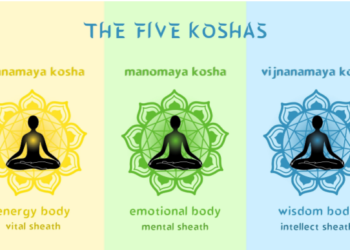Hinduism speaks of 3 types of human bodies, where it states that three types of bodies make a human being. Would you like to know more about what the doctrine of three bodies talks about?
Three Types of Bodies: Gross Body (Sthula Sarira)
The gross body consists of five elements, or pañca-mahābhūtas, which comprise space, air, fire, water, and earth). Besides, the elements have also undergone the pancikarana process. Most importantly, the actions of our past life make our present sthula sarira. Additionally, it goes through six modifications: fetus, birth, growth, change, decay, and death. Besides, it is also the place where we will experience joy (sukha), sorrow (dukkha), and so on. Lastly, it is the basis of relationships like son, father, mother, daughter, and so on.
Three Types of Bodies: Subtle Body (Suksma Sarira)
Suksma sarira includes five elements or panca-mahabutas, consisting of the five elements of space, air, fire, water, and earth. Most importantly, they have not endured the pancikarana process. Likewise, as in the previous body, here too, our past actions determine the birth and body Besides, it is the instrument for experiencing pleasure, pain, and so on.
Further, the subtle body among the three types of bodies comprises 17 aspects. Five jñāna-indriyas, or sense organs of perception: It includes ears, skin, eyes, tongue, and nose. It has the respective functional elements or powers of hearing, touching, seeing, tasting, and smelling. Five karma-indriyas, or organs of action: Karma-indriyas consist of the tongue, hands, legs, genitals, and anus. It does the respective functions of speech, grasping, locomotion, reproduction, and excretion)
The next aspect in the subtle body of the three types of bodies – Five prāṇas: The five pranas include Prāṇa (inhalation), apāna (exhalation), and vyāna (circulation). Additionally, it also consists of udāna, which is the capacity to entertain new thoughts and to leave the body at the time of death. Finally, it also includes samāna, which refers to assimilation. However, it is interesting to note that prāṇa and apāna are not restricted to respiratory activities alone. Two inner instruments: The two internal instruments refer to the mind and intellect
Three Types of Body: Casual Body (Karana Sarira)
The last of the three types of bodies is the casual body. The karana sarira is an inexplicable beginningless body that takes the form of avidya, which is the ignorance of Reality. It is the abode of all vasanas, which is the tendency that compels the jiva to take another birth. Therefore, karana sarira is the cause for the gross and subtle bodies. The casual body is absolute in form and free from any thought modifications.








